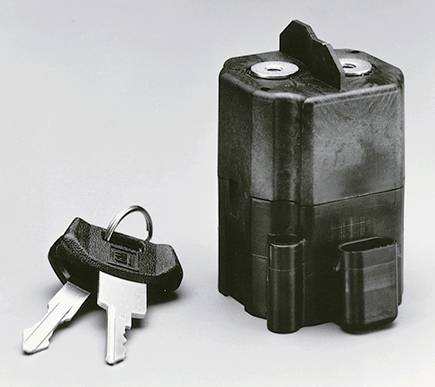Routing the Power
The high demands of the space program for electrical relays have prompted the development of a quality product that now finds wide commercial application.
Kilovac, a division of CII Technologies based in Carpinteria, California, specializes in high performance, high voltage relays and contactors serving the aerospace, communications, medical, military and automotive industries.
Why are electro-mechanical relays so critical? Relays are electrically operated switches that can be located at remote locations. They are used to control electrical current or signals while providing electrical isolation. Electromechanical relays are designed to meet exacting circuit and environmental conditions while controlling numerous circuits simultaneously.
Innovations in switching technology were spurred, in part, by the challenging requirements of the International Space Station. Originally designed for the Lewis Research Center in Cleveland, Ohio, super-sealed switching technology enables a high degree of safety, independent of harsh environments, and permits a completely powered-off state during stops.
Kilovac has a proven track record aboard several space projects. The firm's devices have been utilized on the Telstar IV satellite, for controlling thruster firings and used in shuttle operations numerous times. In one shuttle application, Kilovac's relays are used in the main power supply for the shuttle-to-station docking system. SPAR Aerospace of Canada employs Kilovac contactors in their Special Purpose Dexterous Manipulator (robotic arm) designed for the International Space Station.
Another interesting space project that will haul Kilovac hardware beyond Earth orbit, to both a comet and an asteroid, is NASA's New Millennium craft, Deep Space One. This spacecraft is powered by ion engine, with Kilovac technology assuring the safe routing of high voltage from the probe's solar arrays to the ion engine.
Company skills in space projects have found other avenues of use, specifically in light rail electric train application, known more commonly as next generation people movers.
Kilovac is already a leader in electric vehicle switching technology, a market that is growing not only the automotive market but also the electronic Mars transit walker. For example, there are a number of cities that are considering electric mass transit systems to ease-up freeway congestion and lessen air pollution.
San Francisco's Bay Area Rapid Transit (BART) system is an early generation people mover. Pittsburgh and Atlanta airports also employ similar types of electric mass transit. The concept allows many fewer stops at stations since some of the cars can go directly to their occupant's destination without stopping at all possible stops in between.
Kilovac is working hard to design new and improved applications for these people movers in order to tap into this burgeoning market.
Relays fabricated by CII Technologies' Kilovac division switch main power inside each of the system's cars and control power routing during acceleration and braking. During braking, the energy can be put back onto the grid, thus reclaiming this energy instead of wasting it in brake pads and heat. Also, the large power interrupt of the Kilovac relay—as much as a 2,500 amp break--assures occupant safety even in cases of a component failure on board the people mover car.
Thanks to Kilovac's experience gained from association with NASA needs, the firm became involved in producing high reliability relays for the submarine cable industry. Just as in space, ocean application demands extremely high reliability and long life on the relays. Kilovac's special processes used in many relays now orbiting Earth were applied to the underwater relay design.
One of the processes implemented was small particle inspection. This process, also known generically as Millipore, is a way to ultra-clean a relay and void any particulate matter that could hinder the relay's performance over time.
Presently, a number of fiber-optic submarine communications networks are in progress or being proposed. These systems will link countries and continents to help shape a modern international communications network.
High reliability relays, having a performance rating of 25 years, are a must for any undersea telecommunications application. Kilovac is a lead supplier of the necessary relays to bring such a network to fruition. These relays must route high voltage along system segments, at very low leakage rates. Undersea cable elements can stretch from hundreds to thousands of miles long.

Kilovac relay switches have found a home in satellites as well as undersea fiber optic communications networks.













